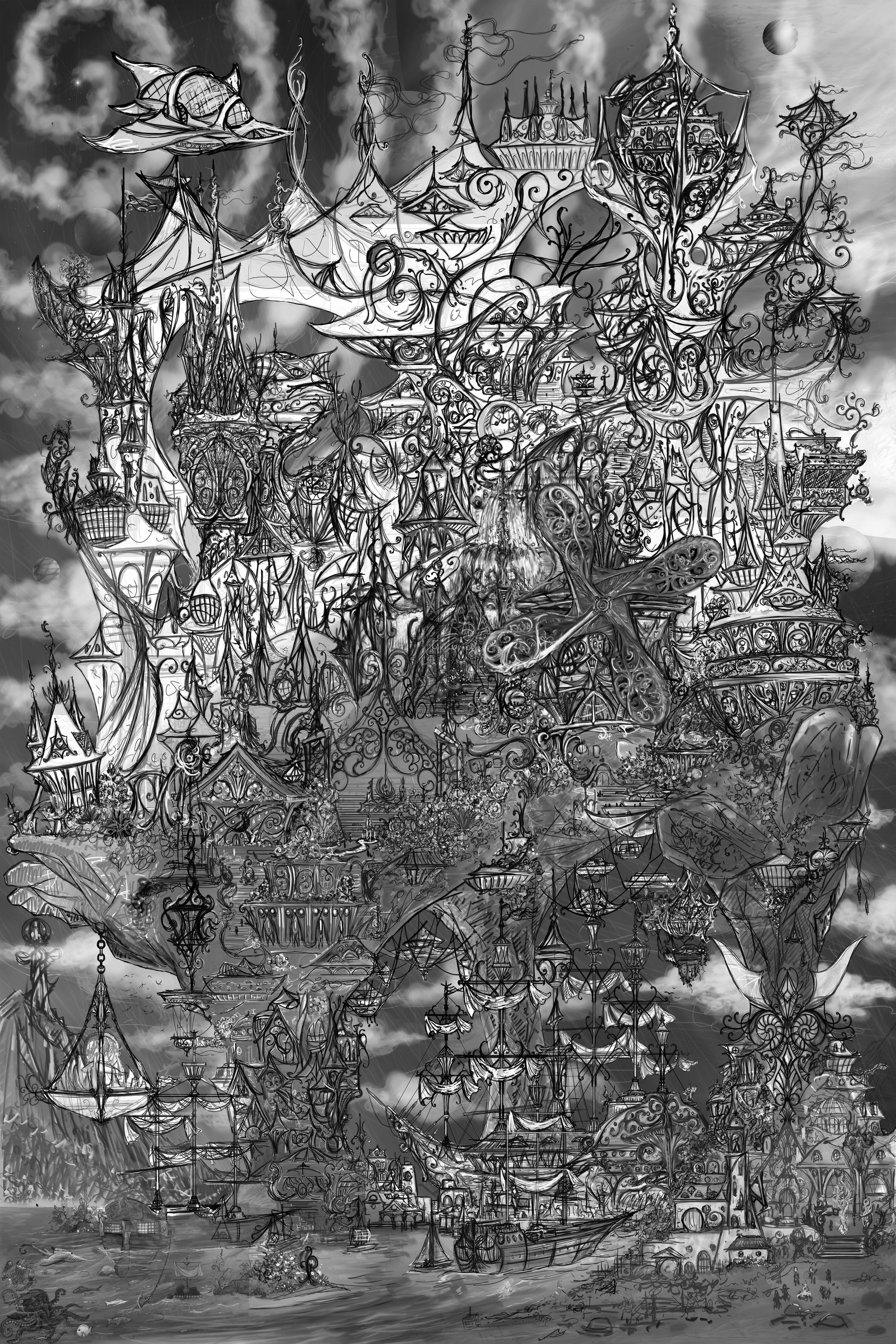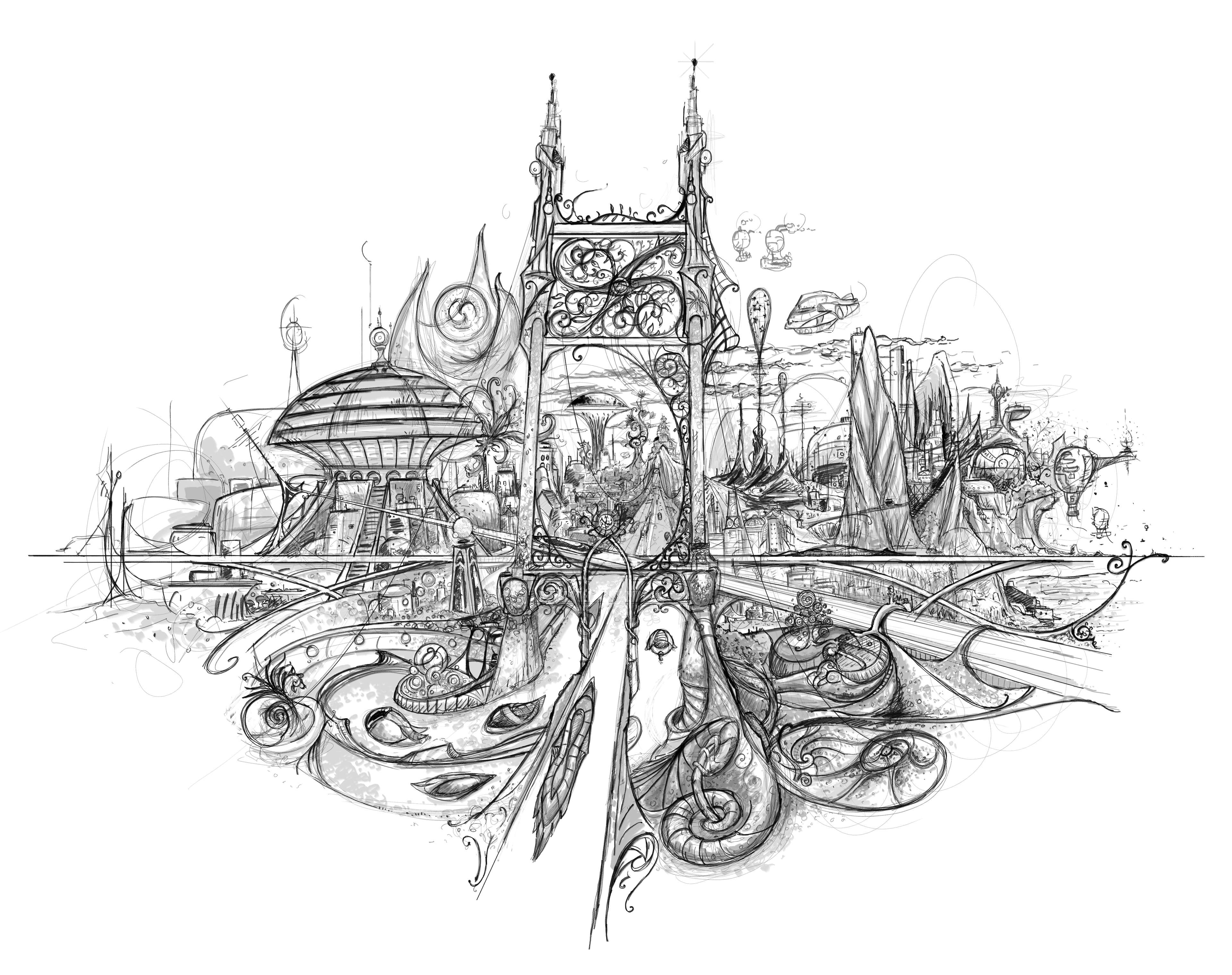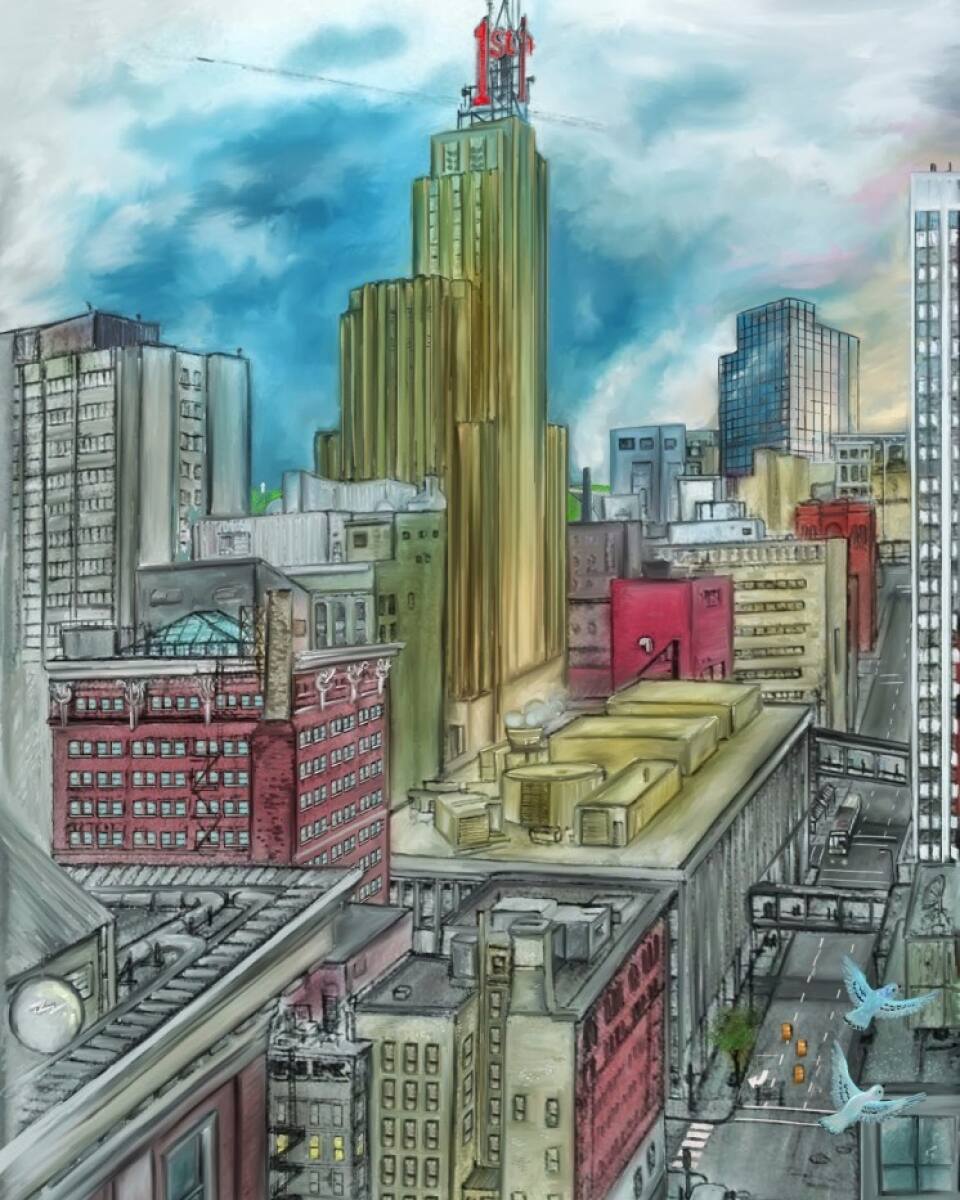I discovered that people understand me better when I communicate through art. Creating makes me feel productive and peaceful. It also makes me feel like I am a part of many unwritten conversations through the years, especially when I visit art galleries.

I am a full-time book illustrator. I have worked on hundreds of books including children’s books.
I created a book for a charity in Africa about safely crossing the street. The book was printed and distributed to schools in cities that had multiple unmarked lanes of traffic. I try to volunteer at least one book a year and this was my favorite cause of all.
The ideal day, work permitting, is to start early with technical illustrations, instructional and precise type work. After lunch, I like to relax and work on children’s books. Either for my own line of stories or for the number of self-publishing authors who find me through my website, mybookillustrator.com . After dinner, I like to paint ideas in Corel Painter digitally or in oil from photos I have taken. That work goes into my work on incoprea.com and Instagram.
I have been drawing all my life. Once I transitioned into digital art, I had a tough time adjusting to the feel of the brushes and workspace in other programs. Once I tried Corel Painter I was blown away. The pencil brush has a shape and feel that is very natural. Using Corel Painter and my experience in drawing, I am able to create highly detailed work in a way that I could not with traditional mediums.
My favorite tools are the Soft 4b and 6b pencils. Painting digitally provides me the flexibility to zoom, edit, copy, mirror etc. while maintaining the natural feel.

One of the biggest challenges is having regular work or pay. If you have too little work, you might not be able to afford the bills. If you have too much work, you may not be able to pay the amount of attention your reputation deserves. Finding the middle ground is not always possible so I recommend one great tip. Pay everything ahead! When you get a check for a big project, pay the rent for two months or the phone bill for six. Paying things ahead makes it less stressful. When it is less stressful, you are more likely to take the work for the pay you deserve and give it the time it needs.
I also recommend planning vacations for you to just do your own art. It’s common practice amongst many artists, to put aside your own ideas for the needs of others. If you plan to take certain time off and let everyone know, you can make space for your own work, and in time, that can grow into its own recurring revenue stream. Especially now that you can post NFT’s and publish books online with worldwide distribution at no cost (other than time).
Yes, I recently sold two NFTs!
I was not sure what NFTs were or if they would ever sell but I thought I would try. I created NFTs of my best digital work and posted them for sale. As I understand, it's like applying an unalterable serial number to a digital file, making something that seemed to not have any intrinsic value because of the ease in which it can be duplicated into something rare. Not only do you get paid when you sell an NFT, but you receive royalties on any future sale at a percentage you set.

The process is not too complicated, but you do need to be aware of technicalities and all the options available. Pick a reputed marketplace to mint your artwork. I chose Rarible. (Minting is the actual process of your art becoming part of the blockchain thus making it unique.)
I made some costly mistakes at the beginning that I hope others avoid. One mistake is to upload an NFT and something goes wrong so you complete the process twice and end up with TWO NFTs. The idea is that you are creating something rare but when you accidentally mint two you are creating more of it than you intended, and it costs gas money to burn. (Gas is the term used in crypto to refer to the transaction fee. Burning is when you pay gas to delete the NFT.)
The biggest concern with NFTs, at first, was the cost of gas, but now you can mint with the option of the buyer paying the 'minting' fee. I am glad this barrier has been removed because I know first-hand, having made something worth selling but having to come up with hundreds of dollars each time is not always possible.
I am interested in how this space will evolve and what people will do with this new medium.
Remember to pay bills ahead as much as possible and take time for yourself to create your own work.
For NFTs, I would advise artists to try it out. Start an account and upload your original work. Make sure that you do not submit the work more than once (causing duplicates) unless you intend to. One of the best things about the NFT is that you will continue to receive royalties on any future sales.
Learn more about Toby Mikle:
Bio - https://incoprea.com/d
NFTs - incoprea - Profile | Rarible